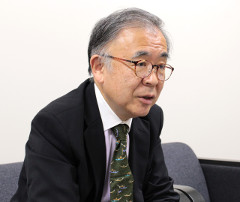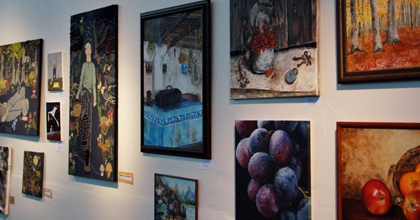It is extremely difficult to impose an inheritance tax on fine arts

In recent years, the inheritance tax has been gaining attention. Behind this is the rapidly aging society and its expectation as part of the economic disparity adjustment.
Certainly, financial assets and movable and immovable assets are subject to inheritance taxation, and the tax collected from these assets is given back to society.
However, in reality, fine arts are rarely taxed although they are taxable. This may sound like tax avoidance, but a major reason for this is that the prices of fine arts are unknown.
Of course, the sale prices of works by renowned artists who went down in art history are sometimes publicly available, and such prices are basically archived in the art industry.
On the other hand, the appraised value of works by unknown artists often may vary among art dealers, and the reality is that the prices of such works cannot be declared.
For example, even if an heir has the fine arts he/she inherited appraised, and declares the appraised value to the tax office, the tax officer probably does not know if it is a fair value.
In an official notice by the National Tax Agency, experts should be consulted about the value of works of fine arts, and sometimes tax offices request that appraisers appraise works of fine arts.
However, if there is a huge difference between the declared value and the appraised value obtained by the tax office, there are no regulations to determine which value should be used. There is only an ambiguous criterion called “rationality.” Right from the start, there exists no clear criterion to determine the appraised value of fine arts.
So, the heir can do nothing to formally declare the value of the fine arts that he/she has inherited.
It is also not proper to declare the purchase prices of fine arts. Such a price is a market price that fluctuates.
In general, it appears that the value of fine arts is rising, but this applies only to a small fraction of works of fine arts. Rather, the prices of most works of fine arts are dropping every year.
In fact, the National Tax Agency acknowledges that a work of fine arts whose acquisition cost is less than 1 million yen can be depreciated. In other words, fine arts are considered as ornamentation or fixture which decline in value every year as they are used.
On the other hand, the value of some works of fine arts actually increases without being noticed as they are repeatedly traded. Overseas investment funds are also involved in that process. In Japan, it is said that this may be the case for the works of certain renowned artists. So, the owner does not really know the asset value of the fine arts himself/herself.
But this is not the case with land property.
The National Tax Agency makes land prices public based on index values called posted prices announced by the Ministry of Land, Infrastructure, Transport and Tourism, appraised values made by nationally accredited real estate appraisers, and the prices of actual transactions. These land prices can be an indicator when declaring inheritance tax.
While there are no public prices in the world of art. There are curators, but they are experts in the cultural value of fine arts.
In many cases, art dealers and art appraisers determine the exchange price, that is, the market value for purchase and sale. However, since there are no public prices for fine arts, their appraisal standard is mostly based on their own rule of thumb.
All things considered, it is extremely difficult to impose an inheritance tax on fine arts in the present situation.
There are various systems to bring fine arts to the “surface”
Only after a work of fine arts is actually sold or purchased does its asset value become definite.
For example, when an individual sells his/her collection of fine arts to an art dealer, the purchase price is recorded as its market value.
On the contrary, no records are kept for buying and selling between individuals.
As a result, some works of fine arts are traded underground between collectors without disclosing prices, and even flown abroad.
In addition, in order to avoid taxation by the disclosure of market price, there are many cases in which works of fine arts have been stored away.
The unidentified value of fine arts could result in declining tax revenues due to tax leakage. Furthermore, the outflow and storing away of fine arts could lead to a loss of Japanese culture.
To avoid underground trading and the storing away of fine arts, a variety of taxation systems have been introduced in Japan.
For example, if you inherit a specific work of fine arts such as an important cultural property, and exhibit it in a museum, the inheritance tax payment is partially deferred during the exhibition period.
Another example is the preferential taxation for works of fine arts donated to the national government or specific public organizations. Any income tax derived from or inheritance tax on such works of fine arts will be exempted.
The request to raise the priority of fine arts when paying in kind of inheritance tax is also recognized in the industry.
However, some are saying that these systems would benefit the rich.
Certainly, reduction measures for taxes mean that the national government extends subsidies. In a sense, the preferential taxation system for those who own fine arts seems unfair.
While on the other hand, fine arts have cultural value. Disallowing owners of fine arts to engage in underground trading or storage would contribute greatly to society.
For example, there may be a collection of fine arts or antiques which is of high cultural value stored away in the storage of an old regional family. If the owner can benefit from showing them to the public, such a collection may be displayed at a public art museum which attracts visitors from outside the prefecture and abroad. Then it could generate positive economic effects which may lead to regional revitalization.
Once fine arts are made public, leakage of their inheritance tax can also be prevented.
Building a new system for the distribution of fine arts

Nevertheless, despite a variety of ongoing systems and efforts, there are still many more works of fine arts which are out of sight.
A major reason for this is that the market value of such fine arts is not clear. Even if works of fine arts are donated or sold to public organizations, if we do not know what they may be valued at, we have no idea how much reduction we should allow.
Some countries in Europe have established systems to determine public appraised values for works of fine arts. Appraisement as well as appraised values made by nationally accredited auctioneers and public appraisers in France are considered official.
The Department for Digital, Culture, Media & Sport, a governmental agency in UK, makes public the guidelines for tax benefits by donation.
In the Netherlands, Federatie TMV, the Dutch Federation of certified appraisers, brokers and auctioneers in movable assets, appraises a wide range of fine arts.
An initiative to establish such a public appraisal organ in Japan is not new. However, in reality, it has made little progress due to different interests.
Under these circumstances, Toobi Certification for Fine Arts, an appraisal organization, was established in March 2018. Its main function is to appraise and set values on works of fine arts under the supervision of a committee comprising members who have no interest in such works of fine arts. Selling and purchasing of fine arts is conducted by art experts such as art dealers.
The third party members who have no part in selling and purchasing of works of fine arts give a fair appraisal and valuation based on all verifiable fine arts trading archives, and then issue certificates.
Such certificates have been issued by Tokyo Art Club Co., Ltd. Customarily, department stores do not sell fine arts without these certificates. Tokyo Art Club’s main job is to assess the authenticity of works of fine arts. Toobi Certification for Fine Arts further valuates the prices of works of fine arts in addition to assessing authenticity.
To put these systems in place and define pricing guidelines for fine arts could make the taxation systems for fine arts mentioned above more accessible to people, and also prevent underground trading, outflow, and the storing away of fine arts.
Furthermore, with clear pricing guidelines for fine arts, the introduction of the margin scheme, which has already been introduced in the Netherlands, will become a realistic option in Japan. This is to impose tax on the margin earned from the selling and buying of fine arts. By using the margin scheme separately from the value of the works of fine arts, the trading of fine arts is expected be revitalized.
Active distribution of fine arts can lead to an increase in tax revenues through taxation on every work of fine arts. It also helps to bring hidden works of fine arts into the market.
It is important to create a system that provides a win-win situation for the owners of fine arts, people who will have an increasing opportunity to enjoy fine arts, and governments that expect more tax revenues.
Such a system should be able to eliminate the opaqueness associated with the current trading of fine arts, encourage more people to enjoy fine arts, and nurture young artists.
* The information contained herein is current as of January 2020.
* The contents of articles on Meiji.net are based on the personal ideas and opinions of the author and do not indicate the official opinion of Meiji University.
* I work to achieve SDGs related to the educational and research themes that I am currently engaged in.
Information noted in the articles and videos, such as positions and affiliations, are current at the time of production.

